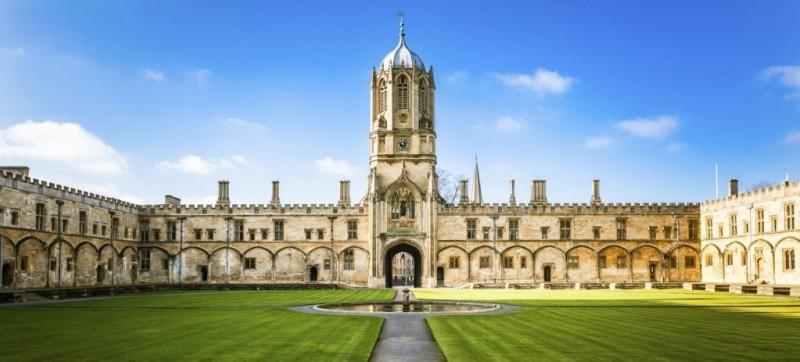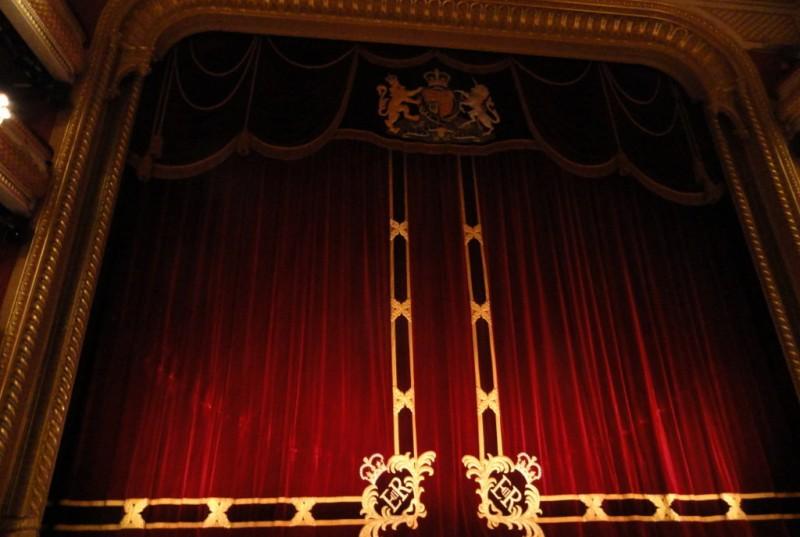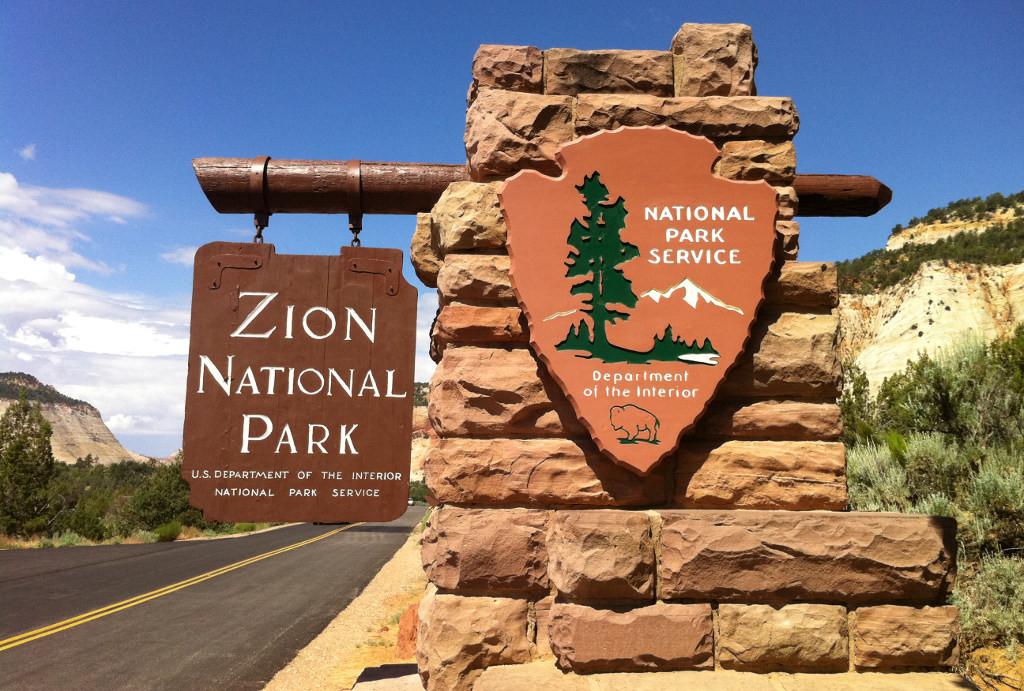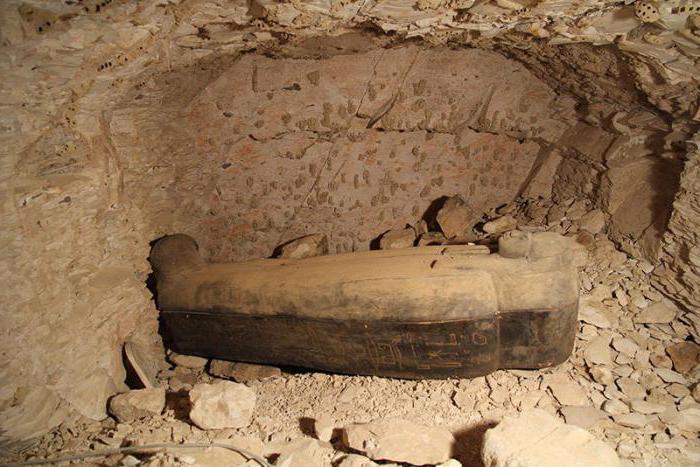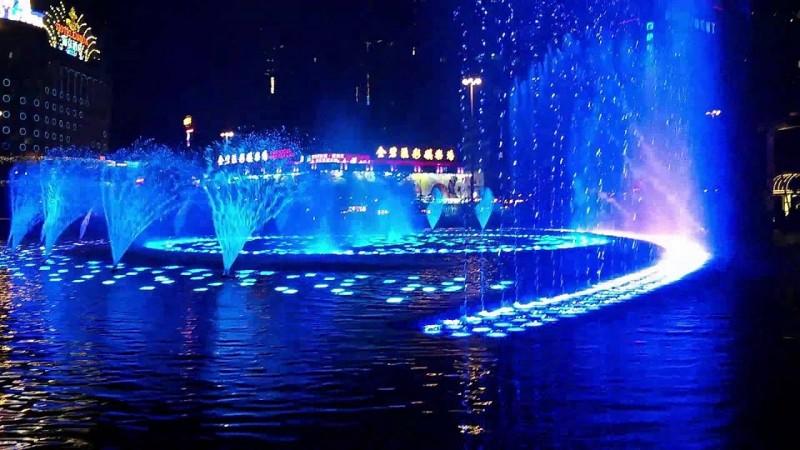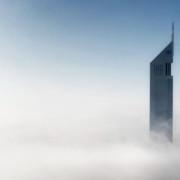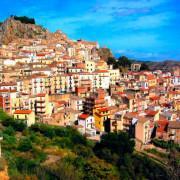Мемориал линкольна
Содержание:
- История создания
- History
- Интересные факты
- Credits
- DeBusk College of Osteopathic Medicine
- Композиция
- Interior
- Lincoln Memorial in Washington, DC
- Design and construction
- Примечания
- Примечания
- Примечания
- Other Lincoln memorials in Washington, D.C.
- История
- Примечания
- Примечания
- Athletics
- Literary Legacy and The Mountain Heritage Literary Festival
- College of Veterinary Medicine
- Особняк Дамбартон-Оукс
- Музей журналистики и новостей «Newseum»
История создания
Если вы спросите американца о том, какой президент вызывает у него наибольшее уважение и восхищение, то непременно услышите, что это Авраам Линкольн. Еще бы, ведь человек, который смог освободить демократическую страну от грязного рабства, достоин самого большого почтения. Неудивительно, что Линкольн является также одним из самых известных президентов США во всем мире. Все это послужило тому, что для внесения имени этого великого человека в историю и в сердца людей, был создан один из самых грандиозных мемориальных комплексов в мире.

Вскоре после того, как Линкольн был убит, правительство США единогласно приняло решение о возведении в его честь мемориала. Такого, чтобы он не только был украшением города и местом памяти о проделанной 16-м президентом работе, но и отражал бы веру Линкольна в свободу людей при любых обстоятельствах.
Власти подошли к вопросу строительства комплекса очень серьезно: несколько десятков лучших архитекторов и скульпторов представляли комиссии свои работы по проекту будущего монумента. Победу в этой борьбе одержали Дэниэль Честер и Гэнри Бэкон – достаточно известные в США скульпторы. Они подошли к работе очень кропотливо, и строительство мемориала продолжалось целых восемь лет (1914-1922). На торжественном открытии памятника присутствовало более 50 000 человек, каждый из которых хотел отдать дань памяти великой личности.

History
In the 1880s, an entrepreneur named Alexander Arthur (1846–1912) and several associates established a firm called American Association, Ltd., the primary purpose of which was to develop the iron ore and coal resources of the Cumberland Gap area. Arthur founded Middlesboro, Kentucky for the company’s employees and furnaces, and constructed a railroad line connecting Middlesboro with Knoxville, Tennessee. Arthur believed Middlesboro would grow into a large industrial city, the so-called «Pittsburgh of the South.» In 1888, he founded the city of Harrogate, which he envisioned would someday be a suburb for Middlesboro’s elite.
Arthur and American Association spent some two million dollars developing Harrogate, the jewel of which was the Four Seasons Hotel, a 700-room structure believed to have been the largest hotel in the U.S. at the time. The hotel included a lavish dining hall, a casino, and a separate sanitarium. The economic panic of the early 1890s and the subsequent collapse of Arthur’s London financial backers doomed American Associates and the Four Seasons was sold and dismantled.
In 1896, General Oliver O. Howard, a former Union officer who had helped establish Howard University (named for him), embarked on a lecture tour. Howard’s agent, Cyrus Kehr, suggested Howard establish a university as a living memorial to President Abraham Lincoln. On June 18, 1896, Howard spoke at the Harrow School, an elementary school at Cumberland Gap founded a few years earlier by Reverend A. A. Myers. After the lecture, Myers asked Howard for assistance in establishing a college for the Cumberland Gap region. Howard related to Myers a conversation he had with Lincoln in 1863 in which the president expressed a desire to do something to help the people of East Tennessee, a majority of whom remained loyal to the Union during the Civil War in spite of the greater state’s secession, and, remembering Kehr’s suggestion, agreed to help Myers establish a university in Lincoln’s honor.
Lincoln Memorial University, circa 1915
With the help of Howard and Kehr, Myers purchased the Four Seasons property, although the sanitarium building was all that remained of the once lavish hotel. Lincoln Memorial University was chartered on February 12, 1897— Lincoln’s 88th birthday— with Cyrus Kehr as its first president. Howard joined the university as its managing director in 1898, and under his leadership the university expanded, acquiring among other places Alexander Arthur’s house, which the university used as a conservatory. Howard mentioned the university and its purpose in a speech at Carnegie Hall in 1901, which helped raise money and allowed the university to pay off its debts.
In 1902, the sanitarium building burned, and its surviving blocks were used to build Grant-Lee Hall, which has since been placed on the National Register of Historic Places. Arthur’s house also burned, but its tower, now called «Conservatory Tower,» still stands. In April 1917, British folklorist Cecil Sharp spent several days at Lincoln Memorial University, where he collected 22 local versions of «old world» ballads such as «Lord Thomas and Fair Ellinor,» «The Daemon Lover,» and «Lady Isabel and the Elf Knight.»
Интересные факты
Ежедневно за мемориалом ухаживает специальный обслуживающий персонал. Поэтому он в любое время суток выглядит потрясающе. О памятнике Линкольну уже несколько десятилетий ходят необыкновенные легенды. Одни утверждают, что на его затылке вылеплено лицо американского генерала Эдварда Ли. Другие говорят о том, что положение рук президента на языке жестов обозначает его инициалы. В 1959 году банк США выпустил в обиход монеты, стоимостью в один цент, с изображением Линкольн Мемориала. Интересно, что создатель монет на самом деле никогда воочию не видел этот памятник.
Адрес: 2 Lincoln Memorial Cir NW, Washington, DC 20037, США
Телефон: +1 202-426-6841
Часы работы: открыто 24 часа в сутки
Credits
New World Encyclopedia writers and editors rewrote and completed the Wikipedia article
in accordance with New World Encyclopedia standards. This article abides by terms of the Creative Commons CC-by-sa 3.0 License (CC-by-sa), which may be used and disseminated with proper attribution. Credit is due under the terms of this license that can reference both the New World Encyclopedia contributors and the selfless volunteer contributors of the Wikimedia Foundation. To cite this article click here for a list of acceptable citing formats.The history of earlier contributions by wikipedians is accessible to researchers here:
Lincoln Memorial history
The history of this article since it was imported to New World Encyclopedia:
History of «Lincoln Memorial»
Note: Some restrictions may apply to use of individual images which are separately licensed.
DeBusk College of Osteopathic Medicine
The initial plans to open Lincoln Memorial University-DeBusk College of Osteopathic Medicine (LMU-DCOM) began in 2004. Autry O.V. Pete DeBusk, the Chairman of the LMU Board of Trustees and LMU alumnus, was interested in starting a college of osteopathic medicine at LMU. After conducting a year-long feasibility study, LMU announced it was pursuing the development of a college of osteopathic medicine and named Ray Stowers, D.O., F.A.C.O.F.P., a rural family physician, as vice president and dean. The college was named DeBusk College of Osteopathic Medicine in honor of its initiator. The four-story, 105,000-square-foot (9,800 m2) building was opened to its inaugural class of osteopathic medical students on August 1, 2007.
The Debusk College of Osteopathic Medicine offers two degrees, a Doctor of Osteopathic Medicine, and a Master of Science in Physician Assistant Studies. The college is accredited by the Commission on Osteopathic College Accreditation (COCA) and the Commission on Colleges of the Southern Association of Colleges and Schools.
The curriculum is divided into preclinical sciences (years 1 and 2), and the clinical experiences (years 3 and 4). To help the students develop diagnostic and problem solving skills, the curricula at DCOM emphasizes the integration of the basic and clinical sciences in medical practice.
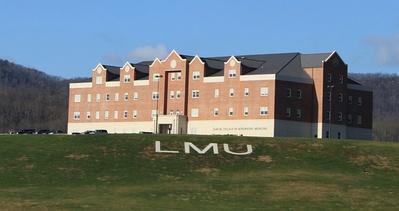
DeBusk College of Osteopathic Medicine
Teaching Affiliates
-
- Alabama Medical Education Consortium, Robertsdale, AL
- Claiborne County Hospital, Tazewell, TN
- Middlesboro ARH, Middlesboro, KY
- Cumberland Medical Center, Crossville, TN
- Hazard ARH Hospital, Hazard, KY
- Harlan ARH Hospital, Harlan, KY
- Indian Path Medical Center, Kingsport, TN
- Knoxville Area (Blount, East TN Children’s, Ft. Sanders, St. Mary’s Medical Center), Knoxville, TN
- Methodist-Le Bonheur Children’s Medical Center Health Care System, Memphis, TN
- Morristown Hamblen Hospital, Morristown, TN
- Sweetwater Hospital Association
- Takoma Regional Hospital, Greenville, TN
- Wellmont Health Systems, SWVA, Big Stone Gap, VA
Societies
Композиция
Композиционно здание символизирует Союз. По его периметру стоят 36 колонн — именно столько штатов объединилось к моменту смерти Линкольна. Названия 48 штатов (а именно столько их было к 1922 году — моменту завершения строительства мемориала) выбиты вдоль внешней стены здания. Табличка с названием двух последних присоединившихся штатов — Аляски и Гавайев — установлена на подходах к мемориалу.
Статуя Линкольна внутри мемориала
В центре мемориала находится статуя Линкольна авторства Даниэля Честера Френча, который использовал фотографии Мэттью Брэди и изобразил сидящего президента с задумчивым лицом, взгляд которого обращен к монументу Вашингтону и Капитолию. Статуя Линкольна имеет 19 футов (5.79 м.) в высоту и весит 175 тонн. Прямо над ней на стене выбиты слова:
В помещении также находятся две огромные каменные плиты: на одной выгравирован текст второго инаугурационного обращения Линкольна, а на другой — его Геттисбергская речь. Две настенные росписи символизируют принципы свободы, справедливости, единения, братства и благотворительности.
Interior
Abraham Lincoln sitting and looking out at the reflecting pool and the Washington Monument
The interior features a three-chamber design, with the central chamber containing a statue of the president and two flanking chambers housing the speeches Lincoln during his presidency. The focus of the memorial is Daniel Chester French’s sculpture of Lincoln, seated. French studied many of Mathew Brady’s photographs of Lincoln to determine his personality, and found that Lincoln’s most unique qualities were his strength and compassion. He depicted the president as worn and pensive, gazing eastwards down the Reflecting Pool at the capital’s starkest emblem of the Union, the Washington Monument. One hand is clenched, the other open. The clenched hand is meant to represent his strength and determination to see the war ended successfully, while the open hand is supposed to represent his warm and compassionate nature. It is said that French, who had a hearing-impaired daughter, carved Lincoln’s hands to sign the letters «A» and «L» in American Sign Language. Beneath his hands, the Roman fasces, symbols of the authority of the Republic, are sculpted in relief on the seat. The statue stands 19 feet tall and 19 feet wide, and was carved by the Piccirilli Brothers of New York City in a studio in the Bronx from 28 blocks of white Georgia marble.
The central cella is flanked by two others. In one, the Gettysburg Address is inscribed on its south wall, and in the other, Lincoln’s second inaugural address is inscribed on its north wall. Above the text of these speeches are a series of murals by Jules Guerin showing an angel, representing truth, freeing a slave (on the south wall, above the Gettysburg Address), and the unity of the American North and South (above the Second Inaugural Address). On the wall behind the statue, visible over the statue’s head, is this dedication:
Lincoln Memorial in Washington, DC
Эта достопримечательность является прекрасной демонстрацией большого вклада одного человека в историю целой страны. Мемориал Линкольна в Вашингтоне — это символ гордости и свободы американцев. Стоит величественный памятник на Национальной аллее.
Историческая справка
Шестнадцатый президент США, Авраам Линкольн, считается одним из самых знаменитых представителей власти не только в Америке, но и во всем мире в целом. А как еще относиться к человеку, который даровал свободу тысячам людей, объявил демократию в США и поднял страну на новый уровень социализации. Все эти заслуги Линкольна перед государством подтолкнули общественность к созданию памятника.
После трагической смерти президента власти единогласно приняли эту идею. Вопрос решался на довольно высоком уровне: были приглашены лучшие архитекторы и просмотрены десятки эскизов. Тендер выиграли два скульптора: Дэниэль Честер и Гэнри Бэкон. Строительство достопримечательности Вашингтона стартовало в 1914-м. Процесс продлился примерно восемь лет. В 1922 году состоялось праздничное открытие мемориала. Это торжество собрало более 50 тысяч благодарных американцев.
Мемориал Линкольна — это не просто памятник
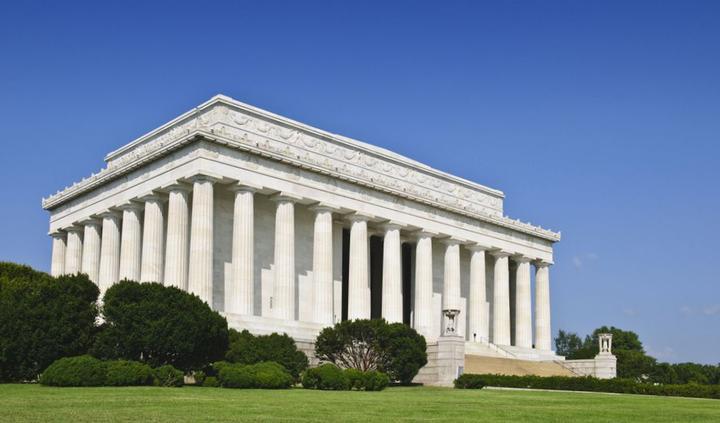 Архитектура здания мемориала напоминает мавзолей с колоннадой
Архитектура здания мемориала напоминает мавзолей с колоннадой
В центре располагается само изваяние Линкольна. Глаза статуи обращены в сторону Капитолия, а в позе читается величие, внутренняя мощь политического деятеля. Собран памятник, несмотря на визуальную цельность, из нескольких крупных частей. Общий вес превышает 150 тонн, высота составляет более 6 метров. Помимо самой статуи, внутри помещения установлены две плиты. На первой были выгравированы лучшие цитаты политика, на второй перечислены все штаты Америки.
Интересные факты о мемориале Линкольна
 В этом храме, как и в сердцах людей, ради которых он сохранил единство, память об Аврааме Линкольне будет жить вечно, гласит надпись над памятником президенту.
В этом храме, как и в сердцах людей, ради которых он сохранил единство, память об Аврааме Линкольне будет жить вечно, гласит надпись над памятником президенту.
С памятником связано множество историй и преданий, правдивых и не очень. Вот лишь несколько наиболее ярких фактов о мемориале Линкольна.
1. Стоя близ статуи, Мартин Лютер Кинг читал речь «У меня есть мечта». По этому поводу у мемориала собралось около 300 тыс. слушателей. Речь была посвящена искоренению расовой дискриминации, свободе американцев, поэтому рядом с символом демократии звучала наиболее впечатляюще.
2. Достопримечательность была местом съемок фильма «Ночь в музее». В одной из сцен мраморный Линкольн оживает и оказывает помощь главным героям.
3. Каждый год в день рождения президента (12 февраля) у мемориала собирается большое число американцев, чтобы почтить память великого соотечественника.
4. Согласно одной из легенд, на затылке статуи находился лик генерала армии Конфедеративных Штатов Америки, Роберта Э. Ли. Он следил за своим поместьем в Арлингтоне.
5. Есть версия, которая гласит о том, что в положении рук Линкольна есть некий символизм. Кисти рук на языке жестов показывают инициалы президента: левая — «L», а правая — «A». История похожа на правду, так как у одного из скульпторов — Дэниэла Честера Френча (Daniel Chester French) сын был глухим, поэтому он сам знал язык жестов глухонемых.
Тем не менее, Служба Национальных Парков США (The National Park Service), отрицает обе последние легенды.
Design and construction
Program from AIA Gold Medal Award honoring architect Henry Bacon, 1923
The Lincoln Monument Association was incorporated by the United States Congress in March 1867 to build a memorial to Lincoln. Little progress was made until the site was chosen in 1901, in an area that was swampland. Congress formally authorized the memorial on February 9, 1911, and the first stone of the Lincoln Memorial was not put into place until Lincoln’s birthday, February 12, 1914. The monument was dedicated by Warren G. Harding on May 30, 1922, attended by the former President’s only surviving child, Robert Todd Lincoln. It won for its architect, the prominent Beaux-Arts designer Henry Bacon, the Gold Medal of the American Institute of Architects, his profession’s highest honor, presented at the Monument in 1923. The stone for the building is Indiana limestone and Colorado Yule marble, quarried at the town of Marble, Colorado. The sculpture itself is made of Georgian marble. Originally under the care of the Office of Public Buildings and Public Parks, it was transferred to the National Park Service on August 10, 1933.
Standing apart from the somewhat triumphal and Roman manner of most of Washington, the memorial takes the severe form of a Greek Doric temple. It is ‘peripteral,’ with 36 massive columns, each 33 feet high, entirely surrounding the cella of the building itself, which rises above the porticos. Five adults holding hands cannot quite embrace the columns. Architect Henry Bacon spent several years studying in Europe and was very fond of the architecture found in ancient Greece. He therefore chose to model the memorial after the Parthenon in Greece. By a happy afterthought, the 36 columns required for the design were seen to represent the 36 states of the Union at the time of Lincoln’s death, and their names were inscribed in the entablature above each column. The names of the 48 states of the Union when the Memorial was completed are carved on the exterior attic walls, and a later plaque commemorates the admission of Alaska and Hawaii.
Примечания
- Prokopowicz, Gerald J. Did Lincoln Own Slaves? And Other Frequently Asked Questions About Abraham Lincoln. Pantheon, 2008. ISBN 978-0-375-42541-7
- Evelyn, Douglas E. and Dickson, Paul A. On this Spot: Pinpointing the Past in Washington, D.C. (National Geographic Society, 1999). ISBN 0-7922-7499-7
- Anderson, Shane A. The Complete Lincoln Cent Encyclopedia. — Iola, Wisc.: Krause Publications., 1996. — P. 98. — ISBN 0-87341-445-4.
- Taxay, Don. The U.S. Mint and Coinage. — New York, N.Y.: Durst Numismatic Publications, 1983. — P. 339. — ISBN 0-915262-68-1.
- Breen, Walter. Walter Breen’s Complete Encyclopedia of U.S. and Colonial Coins. — New York, N.Y.: Doubleday, 1988. — P. 223. — ISBN 0-385-14207-2.
Примечания
- Prokopowicz, Gerald J. Did Lincoln Own Slaves? And Other Frequently Asked Questions About Abraham Lincoln. Pantheon, 2008. ISBN 978-0-375-42541-7
- Evelyn, Douglas E. and Dickson, Paul A. On this Spot: Pinpointing the Past in Washington, D.C. (National Geographic Society, 1999). ISBN 0-7922-7499-7
- Anderson, Shane A. The Complete Lincoln Cent Encyclopedia. — Iola, Wisc.: Krause Publications., 1996. — P. 98. — ISBN 0-87341-445-4.
- Taxay, Don. The U.S. Mint and Coinage. — New York, N.Y.: Durst Numismatic Publications, 1983. — P. 339. — ISBN 0-915262-68-1.
- Breen, Walter. Walter Breen’s Complete Encyclopedia of U.S. and Colonial Coins. — New York, N.Y.: Doubleday, 1988. — P. 223. — ISBN 0-385-14207-2.
Примечания
- Prokopowicz, Gerald J. Did Lincoln Own Slaves? And Other Frequently Asked Questions About Abraham Lincoln. Pantheon, 2008. ISBN 978-0-375-42541-7
- Evelyn, Douglas E. and Dickson, Paul A. On this Spot: Pinpointing the Past in Washington, D.C. (National Geographic Society, 1999). ISBN 0-7922-7499-7
- Anderson, Shane A. The Complete Lincoln Cent Encyclopedia. — Iola, Wisc.: Krause Publications., 1996. — P. 98. — ISBN 0-87341-445-4.
- Taxay, Don. The U.S. Mint and Coinage. — New York, N.Y.: Durst Numismatic Publications, 1983. — P. 339. — ISBN 0-915262-68-1.
- Breen, Walter. Walter Breen’s Complete Encyclopedia of U.S. and Colonial Coins. — New York, N.Y.: Doubleday, 1988. — P. 223. — ISBN 0-385-14207-2.
Other Lincoln memorials in Washington, D.C.
The Lincoln Memorial was preceded by three earlier remarkable memorials to Lincoln in the capital.
The first Lincoln statue in the United States, in front of what was the first City Hall was unveiled on April 15, 1868, the third anniversary of Lincoln’s death, by his successor, Andrew Johnson. It was paid for by the citizens of Washington, D.C. Lot Flannery, the Irish sculptor, who claimed he knew Lincoln and was present at the theater when Lincoln was assassinated. The memorial was meant not only to commemorate Lincoln but remind the public of his authorization of up to one million U.S.D. to pay loyal D.C. slaveholders for their human property. This initiative reflected Lincoln’s need to balance the drive towards the end of slavery with his dependency on the loyalty of the citizens of D.C. to the Union. The statue was taken down in 1919, but was restored to its original location after considerable controversy in 1923.
A Lincoln statue was dedicated inside the Rotunda of the United States Capitol on January 25, 1871, in the presence of Ulysses S. Grant. While still a teenager, sculptress Vinnie Ream began preliminary sketches of Lincoln during the last five months of his life. She became the first woman to receive a commission from Congress to create a statue for the Rotunda. To accurately render the statue’s garments, she borrowed the clothes Lincoln wore the night of his assassination.
The Emancipation Memorial (also known as «Freedom’s Memorial») (1876) in Lincoln Park on Capitol Hill portrays a kneeling man representing the last man captured under the Fugitive Slave Law, who snaps slavery’s chains as Lincoln proffers the Emancipation Proclamation. Freed black slaves raised all the funds to erect it. The initiative came from Charlotte Scott, of Virginia, who donated the first five dollars she earned as a free American. Archer Alexander, himself a former slave, posed as the model for the slave in the statue.
История
Требования построить достойный памятник для увековечивания памяти президента высказывались с момента его гибели. Первый публичный мемориал Авраама Линкольна был открыт через три года после его убийства, в 1868 году, в Вашингтоне перед зданием мэрии Округа Колумбия (где в настоящее время располагается Апелляционный суд США по округу Колумбия).
В марте 1867 года Конгресс принял решение о создании национального мемориала. С реализацией проекта было много проволочек, решение о строительстве многократно откладывалось (в 1901, 1902 и 1908 годах), и только в 1913 году Конгресс утвердил дизайн и расположение мемориала. Первоначально план комиссии по строительству ставили под сомнение: памятник в виде греческого храма, предложенный архитектором Генри Бэконом казался чересчур величественным для увековечивания памяти такого скромного человека, как Линкольн, кроме того болотистая местность в парке «Западный Потомак» не очень подходила под строительство столь большого сооружения. И всё-таки план был утверждён, на реализацию проекта выделено 300 000 долларов. Первый камень был заложен 12 февраля 1914 года. Памятник открыли 30 мая 1922 года, на церемонии присутствовал единственный оставшийся в живых сын бывшего президента Роберт Тодд Линкольн. Для строительства использовали известняк из Индианы и мрамор из Колорадо, скульптуру президента изготовили из мрамора, добытого в Джорджии. Первоначально памятник контролировало Управление общественных зданий и территорий, но 10 августа 1933 года мемориал был передан Службе национальных парков.
28 августа 1963 года памятник был свидетелем одной из крупнейших демонстраций в американской истории — Марша на Вашингтон за рабочие места и свободу. Много речей тогда звучало со ступеней мемориала, в том числе знаменитое обращение Мартина Лютера Кинга «У меня есть мечта». В память об этом событии недалеко от входа установлена памятная плита.
Примечания
- Prokopowicz, Gerald J. Did Lincoln Own Slaves? And Other Frequently Asked Questions About Abraham Lincoln. Pantheon, 2008. ISBN 978-0-375-42541-7
- Evelyn, Douglas E. and Dickson, Paul A. On this Spot: Pinpointing the Past in Washington, D.C. (National Geographic Society, 1999). ISBN 0-7922-7499-7
- Anderson, Shane A. The Complete Lincoln Cent Encyclopedia. — Iola, Wisc.: Krause Publications., 1996. — P. 98. — ISBN 0-87341-445-4.
- Taxay, Don. The U.S. Mint and Coinage. — New York, N.Y.: Durst Numismatic Publications, 1983. — P. 339. — ISBN 0-915262-68-1.
- Breen, Walter. Walter Breen’s Complete Encyclopedia of U.S. and Colonial Coins. — New York, N.Y.: Doubleday, 1988. — P. 223. — ISBN 0-385-14207-2.
Примечания
- Prokopowicz, Gerald J. Did Lincoln Own Slaves? And Other Frequently Asked Questions About Abraham Lincoln. Pantheon, 2008. ISBN 978-0-375-42541-7
- Evelyn, Douglas E. and Dickson, Paul A. On this Spot: Pinpointing the Past in Washington, D.C. (National Geographic Society, 1999). ISBN 0-7922-7499-7
- Anderson, Shane A. The Complete Lincoln Cent Encyclopedia. — Iola, Wisc.: Krause Publications., 1996. — P. 98. — ISBN 0-87341-445-4.
- Taxay, Don. The U.S. Mint and Coinage. — New York, N.Y.: Durst Numismatic Publications, 1983. — P. 339. — ISBN 0-915262-68-1.
- Breen, Walter. Walter Breen’s Complete Encyclopedia of U.S. and Colonial Coins. — New York, N.Y.: Doubleday, 1988. — P. 223. — ISBN 0-385-14207-2.
Athletics
Sports teams, called the «Railsplitters,» compete in NCAA Division II in the South Atlantic Conference.
LMU currently competes in 21 sports. Men’s sports are: baseball, basketball, bowling, cross country, golf, lacrosse, soccer, tennis, track & field outdoor and volleyball. Women’s sports are: basketball, beach volleyball, bowling, cross country, golf, lacrosse, soccer, softball, tennis, track & field outdoor, and volleyball. Bowling participates as an East Coast Conference affiliate. Beach volleyball and men’s volleyball are single-division NCAA sports.
LMU does not have a football program, though it did have one in the past. Other sports formerly offered at LMU include fencing and tumbling.
Athletics have been a part of LMU since 1907, when baseball was first organized on campus.
Facilities include the Turner Arena, Mary Mars Gymnasium, Dorothy Neely Field (Softball), Lamar Hennon Field (Baseball), LMU Soccer Complex, LMU Lacrosse Complex, LMU Tennis Complex, LMU Indoor Tennis Center, and LMU Golf Complex. The bowling teams are based out of Hillcrest Lanes in Harrogate, Tennessee and the golf teams are based out of Woodlake Golf Club in Tazewell, Tennessee.
Literary Legacy and The Mountain Heritage Literary Festival
LMU is known for a rich literary history that includes such renowned authors as James Still (River of Earth, The Wolfpen Poems), Jesse Stuart (Taps for Private Tussie, The Thread That Runs So True), Don West (Clods of Southern Earth), and George Scarbrough (Tellico Blue). At one point, Emma Bell Miles, author and painter, served as Artist-in-Residence at the university, a position that went unfilled until it was taken over by bestselling novelist Silas House (Clay’s Quilt, The Coal Tattoo) in 2005. House started the Mountain Heritage Literary Festival that same year and the gathering has grown steadily, featuring the region’s most celebrated writers (Lee Smith, Earl Hamner, Jr., Ron Rash, Sheila Kay Adams, Denise Giardina, etc.) and becoming one of the premier events of Appalachian literature. Lincoln Memorial University is also home to the Grant Lee Literary Society, which spawned the still surviving Gamma Lambda Sigma Fraternity.
College of Veterinary Medicine
The LMU College of Veterinary Medicine welcomed its inaugural class in 2014 and achieved American Veterinary Medical Association accreditation in January 2019. Though many classes and research facilities are located within the Hamilton Math and Science Building (completed in 2012) on the main LMU campus, the College of Veterinary Medicine’s hands-on educational facilities are located 12 miles from Harrogate in Ewing, Virginia. The DeBusk Veterinary Teaching Center (DVTC) is housed on 700 acres and provides extensive practical experience and educational opportunities with a wide variety of species. The Large Animal Component of the DVTC provides a working farm environment with a large herd of cattle, and provides a hands-on education site where anatomy, clinical, and surgical skills are taught for dogs, cats, horses, cattle, and sheep.
Особняк Дамбартон-Оукс
 Особняк Дамбартон-Оукс. | Фото: wikimedia.
Особняк Дамбартон-Оукс. | Фото: wikimedia.
В истории особняка Дамбартон-Оукс немало интересных событий. Например, в 1944 году в этом поместье состоялись дипломатические встречи, заложившие основу для создания Организации Объединенных Наций. Сегодня усадьба управляется попечителями Гарвардского университета, поэтому студенты, преподаватели и сотрудники Гарварда попадают сюда бесплатно.
Те, кто решат посетить особняк Дамбартон-Оукс, увидят изысканные образчики византийского искусства и артефакты доколумбовой цивилизации, а также увлекательную библиотеку редких книг, самая старая из которых датируется еще 1491 годом. Большое удовольствие вам подарит и прогулка по расположенным рядом с особняком очаровательным садам, занимающим больше 10 гектаров. Цветущие весной растения, в том числе вишни, просто великолепны.
С ноября до середины марта посетить сады можно бесплатно, но примите во внимание, что они закрываются в 5 часов вечера. Адрес: Dumbarton Oaks Museum, 32nd Street Northwest, Вашингтон, округ Колумбия, США
Адрес: Dumbarton Oaks Museum, 32nd Street Northwest, Вашингтон, округ Колумбия, США.
Музей журналистики и новостей «Newseum»
 Музей журналистики и новостей «Newseum». | Фото: Steve Gardner / Flickr.
Музей журналистики и новостей «Newseum». | Фото: Steve Gardner / Flickr.
Дети всех возрастов наряду с остальными членами семьи с удовольствием посетят «Newseum». Этот музей посвятил себя пяти свободам, зафиксированным в Первой поправке к Конституции США – свободам слова, печати, собраний, петиций и вероисповедания.
Посетители здесь могут отследить эволюцию электронных средств коммуникации – от зарождения радио до технологий сегодняшних и завтрашних. Четко прослеживается хронология развития важнейших средств массовой информации – печать, радио, телевидение, фотография, интернет.
Интерактивные музейные выставки рассказывают о важных исторических событиях, освещаемых посредством различных новостных сред: вы пройдете путь от хронологических таблиц, описывающих события Американской революции, до выставки 9/11, посвященной террористическому акту 9 сентября 2001 года, приведшему к крушению Всемирного торгового центра. Вообще этот музей – один из самых интерактивных в мире. Может быть, именно благодаря этому он столь популярен: с 2008 года, когда «Ньюсеум» был открыт, он принял более шести миллионов посетителей.
Адрес: Newseum, 555 Pennsylvania Ave NW, Washington, DC 20001, США.
